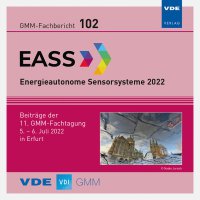USID: Ultrasonic Backscatter Communication for Structural Health Monitoring
Konferenz: EASS 2022 - 11. GMM-Fachtagung Energieautonome Sensorsysteme 2022
05.07.2022 - 06.07.2022 in Erfurt, Germany
Tagungsband: GMM-Fb. 102: EASS 2022
Seiten: 3Sprache: EnglischTyp: PDF
Autoren:
Oppermann, Peter (Institute for Autonomous Cyber-Physical Systems, TUHH, Hamburg, Germany)
Inhalt:
Sensor networks are a game-changer for the continuous monitoring of civil infrastructure, potentially increasing lifetime while reducing maintenance costs. However, wire- and batteryless sensors are preferable for lower cost of deployment. Radio backscatter (e.g., RFID) can provide power to the sensor nodes and establish a communication channel for data collection. However, radio frequencies can be challenging in certain environments, e.g., if sensors are underwater or shielded by metal. An RFID-like communication relying on acoustic waves through the structure is an attractive alternative, especially since many structural health monitoring (SHM) methods already require ultrasonic transducers that can be reused for communication and power. This work investigates passive communication through acoustic guided-wave metal channels, which are challenging because of the strong dependence of the signal-to-noise ratio on frequency, and strong multipath characteristics of the structural channel. To tackle these challenges, we show custom hardware for a USID tag and reader that can - choose the optimal carrier frequency for every channel on the fly, - employ higher-order load modulation in contrast to just binary modulation, - select the optimal load impedances for maximal SNR at the tag, and - demodulate the received signal analogously with lower power requirements compared to off-the-shelf solutions Furthermore, we developed a protocol for selecting the ideal carrier frequency for each channel at the reader, optimal constellation points at the tag, and channel estimation to mitigate inter-symbol-interference (ISI) through multipath prop-agation. The resulting acoustic backscatter communication system can reach more than 1.2 kbit/s data rate at distances up to 3 meters through guided-wave metal channels, where higher-order modulation achieves a significant increase in achiev-able data rates in all channels.


